- Review Articles
- Neonatology (Perinatology)
- Practice for preterm patent ductus arteriosus; focusing on the hemodynamic significance and the impact on the neonatal outcomes
- Jin A Lee
- Clin Exp Pediatr. 2019;62(7):245-251. Published online April 8, 2019
-
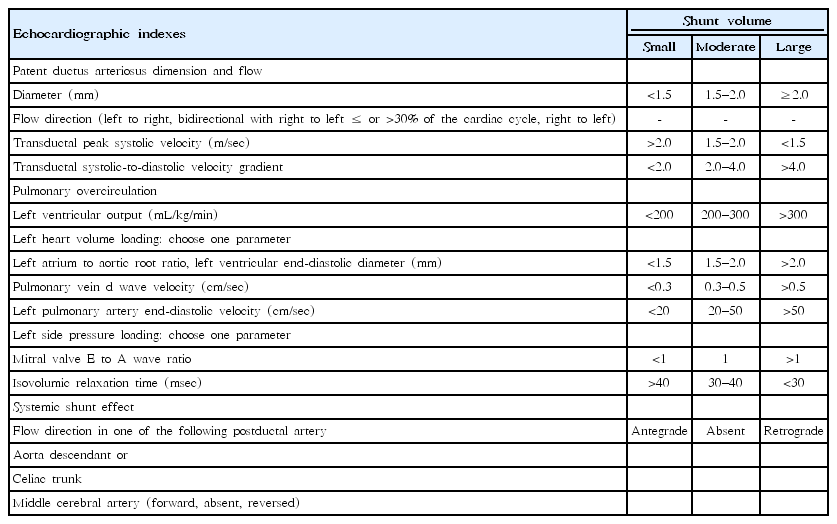
Hemodynamically significant preterm patent ductus arteriosus (PDA) affects mortality; comorbidities such as necrotizing enterocolitis, intraventricular hemorrhage, and bronchopulmonary dysplasia; and adverse long-term neurodevelopmental outcomes in preterm infants, particularly in very low birth weight infants. However, recent studies have indicated that there is no consensus on the causal relationship between PDA and neonatal outcomes, the benefit of PDA treatment, the factors...
- Recommended immunization schedule for children and adolescents: Committee on Infectious Diseases of the Korean Pediatric Society, 2018
- Eun Hwa Choi, Su Eun Park, Yae-Jean Kim, Dae Sun Jo, Yun-Kyung Kim, Byung-Wook Eun, Taek-Jin Lee, Jina Lee, Hyunju Lee, Ki Hwan Kim, Hye-Kyung Cho, Eun Young Cho, Jong-Hyun Kim
- Clin Exp Pediatr. 2019;62(7):252-256. Published online July 15, 2019
-
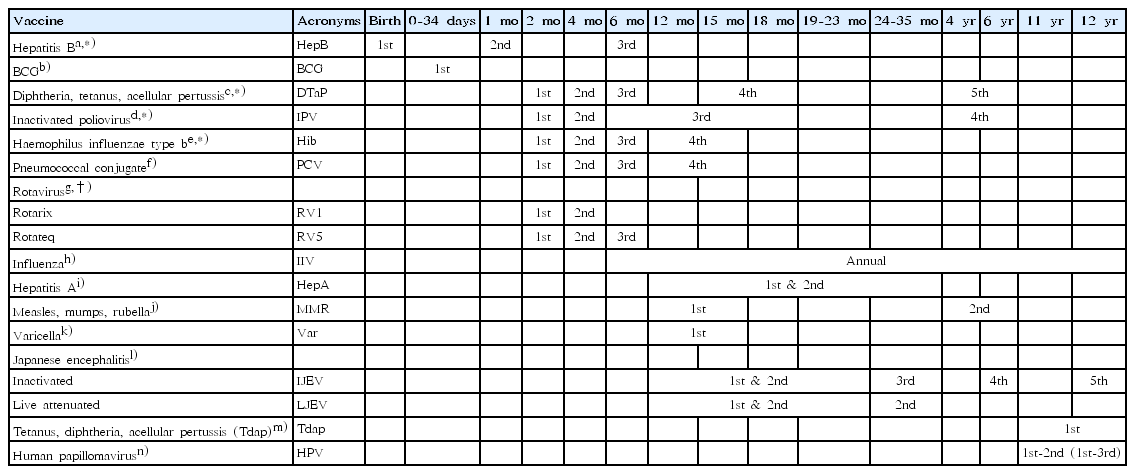
The Committee on Infectious Diseases of the Korean Pediatric Society recommended immunization schedule for children and adolescents aged 18 years or younger in the 9th (2018) edition of Immunization guideline. This report provides the revised recommendations made by the committee and summarizes several changes from the 2015 guideline. National immunization program (NIP) launched a human papillomavirus (HPV) immunization for girls...
- Editorials
- Endocrinology
- Simple universal cutoff point of waist-height ratio for metabolic risk in Korean children and adolescents
- Hae Soon Kim
- Clin Exp Pediatr. 2019;62(7):257-258. Published online March 28, 2019
-
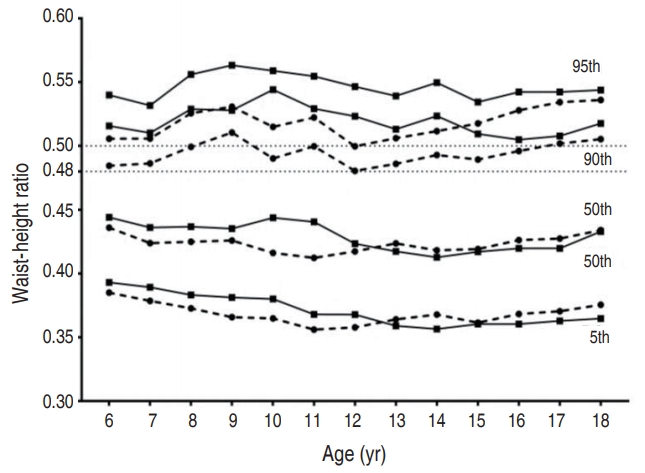
- Neurology
- Perampanel is also a useful adjunctive treatment option in refractory epilepsy in children
- Jon Soo Kim, Won Seop Kim
- Clin Exp Pediatr. 2019;62(7):259-260. Published online March 5, 2019
-
- Original Articles
- Endocrinology
- Secular change in waist circumference and waist-height ratio and optimal cutoff of waist-height ratio for abdominal obesity among Korean children and adolescents over 10 years
- Min Sub Kim, Se Young Kim, Jae Hyun Kim
- Clin Exp Pediatr. 2019;62(7):261-268. Published online December 3, 2018
-
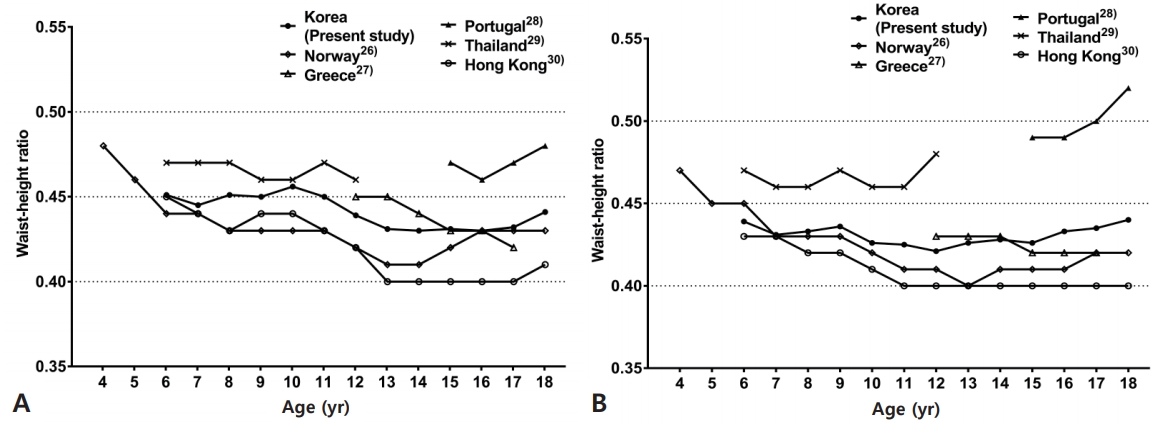
Purpose: This study aimed to evaluate the time trends of waist circumference (WC) and waist-height ratio (WHR), and to present WC and WHR distributions with optimal WHR cutoff for abdominal obesity in Korean children and adolescents. Methods: We performed a retrospective cross-sectional analysis of data from 13,257 children and adolescents (6,987 boys and 6,270 girls) aged 6–18 years who were included...
- Neurology
- Efficacy and tolerability of adjunctive perampanel treatment in children under 12 years of age with refractory epilepsy
- Yuni Yun, Dongsub Kim, Yun-Jeong Lee, Soonhak Kwon, Su-Kyeong Hwang
- Clin Exp Pediatr. 2019;62(7):269-273. Published online December 26, 2018
-

Purpose: There is limited data on the use of perampanel in children under 12 years of age. We evaluated the efficacy and tolerability of adjunctive perampanel treatment in children under 12 years of age with refractory epilepsy. Methods: This retrospective observational study was performed in Kyungpook National University Hospital from July 2016 to March 2018. A responder was defined as a...
- Endocrinology
- Comparison of effectiveness of growth hormone therapy according to disease-causing genes in children with Noonan syndrome
- Kyo Jin Jo, Yoo Mi Kim, Ju Young Yoon, Yeoun Joo Lee, Young Mi Han, Han-Wook Yoo, Hyang-Sook Kim, Chong Kun Cheon
- Clin Exp Pediatr. 2019;62(7):274-280. Published online December 3, 2018
-
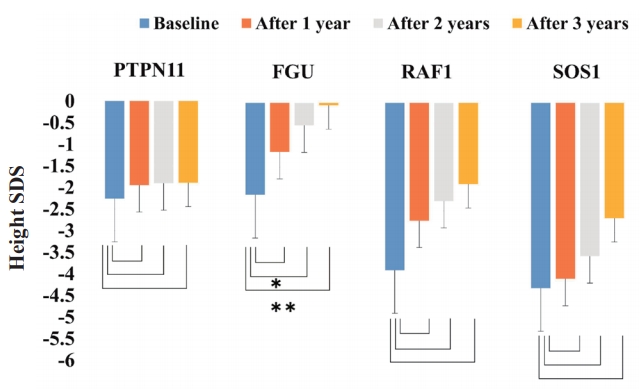
Purpose: To analyze the growth response to growth hormone (GH) therapy in prepubertal patients with Noonan syndrome (NS) harboring different genetic mutations. Methods: Twenty-three patients with prepubertal NS treated at Pusan National University Children’s Hospital between March 2009 and July 2017 were enrolled. According to the disease-causing genes identified, the patients with NS were divided into 4 groups. Three groups were...
- Neurology
- Correlation of serum S100B levels with brain magnetic resonance imaging abnormalities in children with status epilepticus
- Prastiya Indra Gunawan, Darto Saharso, Dian Purnama Sari
- Clin Exp Pediatr. 2019;62(7):281-285. Published online May 8, 2019
-
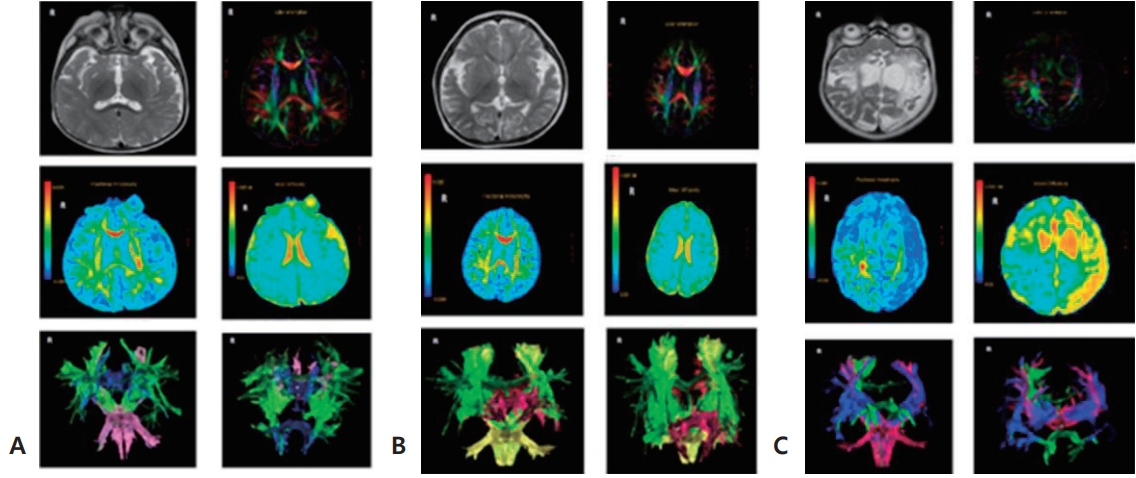
Purpose: To evaluate the association between elevated S100B levels with brain tissue damage seen in abnormalities of head magnetic resonance imaging (MRI; diffusion tensor imaging [DTI] sequence) in patients with status epilepticus (SE). Methods: An analytical observational study was conducted in children hospitalized at Dr Soetomo Hospital, Surabaya, from July to December 2016. The patients were divided into 2 groups: SE...












